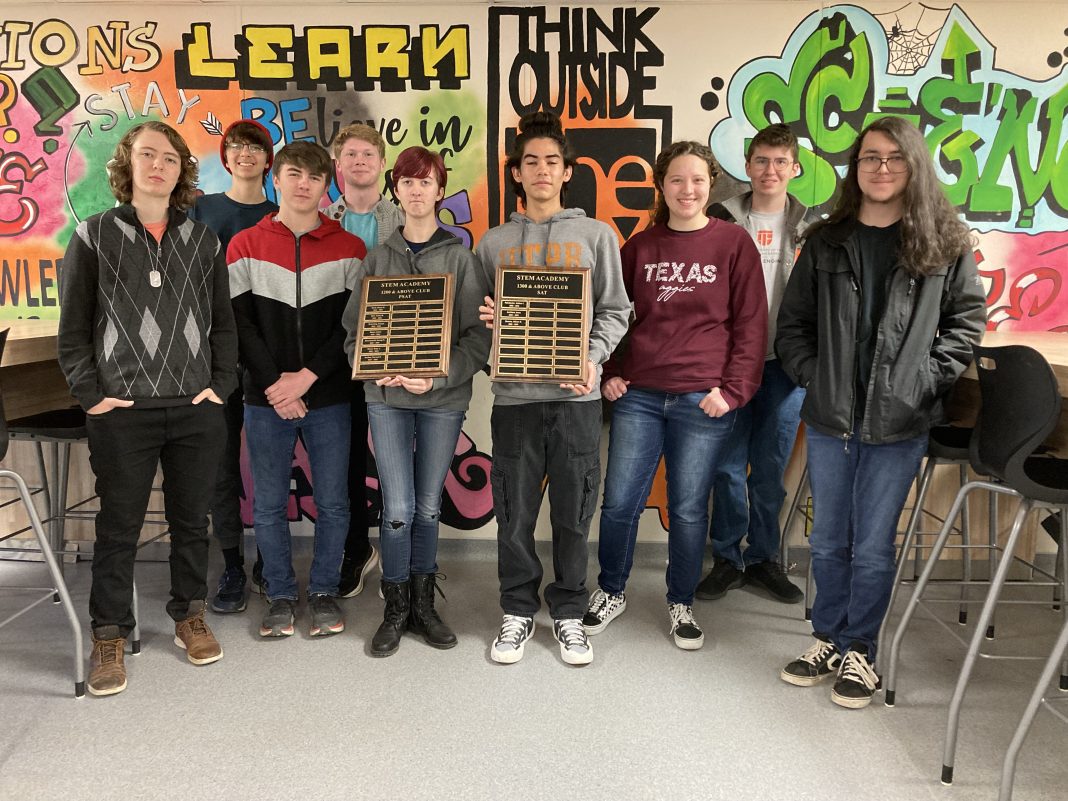UTPB STEM Academy is celebrating its high standardized test scorers with plaques (and a breakfast).
Middle/High School Principal Cody Griffin said the idea was suggested by a teacher when they started getting their SAT and PSAT scores back from the College Board.
They looked at scores of 1200 and above for the PSAT and 1300 and above for the SAT. The maximum score for the PSAT is 1520 and it’s 1600 for the SAT.
High scorers on the PSAT were Brian Nash, Haley Hart, Cassie Browning, Quinn Boyer, Georgi Shoumaroff, Evan Boyer and Forrest Harlow.
On the SAT, Joshua Poindexter, Isaac Arellano and Allison Barnes scored 1300 and above.
“We looked at cut mark score performance on PSAT at 1200 and above and for SAT performance 1300 and above. The plaque has the distinctions between the two groups and what they scored,” Griffin said.
He added that they hosted a breakfast for the students to recognize their achievements and invited their parents to attend.
“This last performance on SAT and PSAT was pretty phenomenal,” Griffin said.
“The way those scores or those cut marks are made is based on a yearly rotating, fluctuating score. They look at the scores in the state and then they apply that percentage across the nation. It’s kind of a complicated calculation,” Griffin said.
Shoumaroff said teacher Jacob Green held a study session at STEM Academy. But most of the students scored high even without much preparation.
“I didn’t even think that was really that high of a score. I thought it was pretty average,” Browning said.
Barnes said you should memorize the formulas for the math section and that you are not penalized for guessing.
The students also suggested practicing in timed segments and skipping questions you don’t know the answer to right away.
Browning said she thought the PSAT would be like the STAAR, but it wasn’t.
“It’s very different,” Browning said.
Griffin said a lot of the students who are interested in competitive admittance at top-tier colleges tend to be more self-motivated so they attend study sessions. Their physics/calculus teacher Jacob Green has study sessions specifically for math.
“I like working at a campus that has students that are motivated to be successful. I tend to have a lot of kids that are motivated to be successful,” Griffin said.
Harlow said it tends to make competition for class rank kind of cutthroat.
Griffin added that prospect of academic work that’s challenging would scare off a lot of students.
“In this instance, they’re not scared off by the hard work,” Griffin said.
He added that the students have teachers that will work with them which also helps in preparing for the exams.




